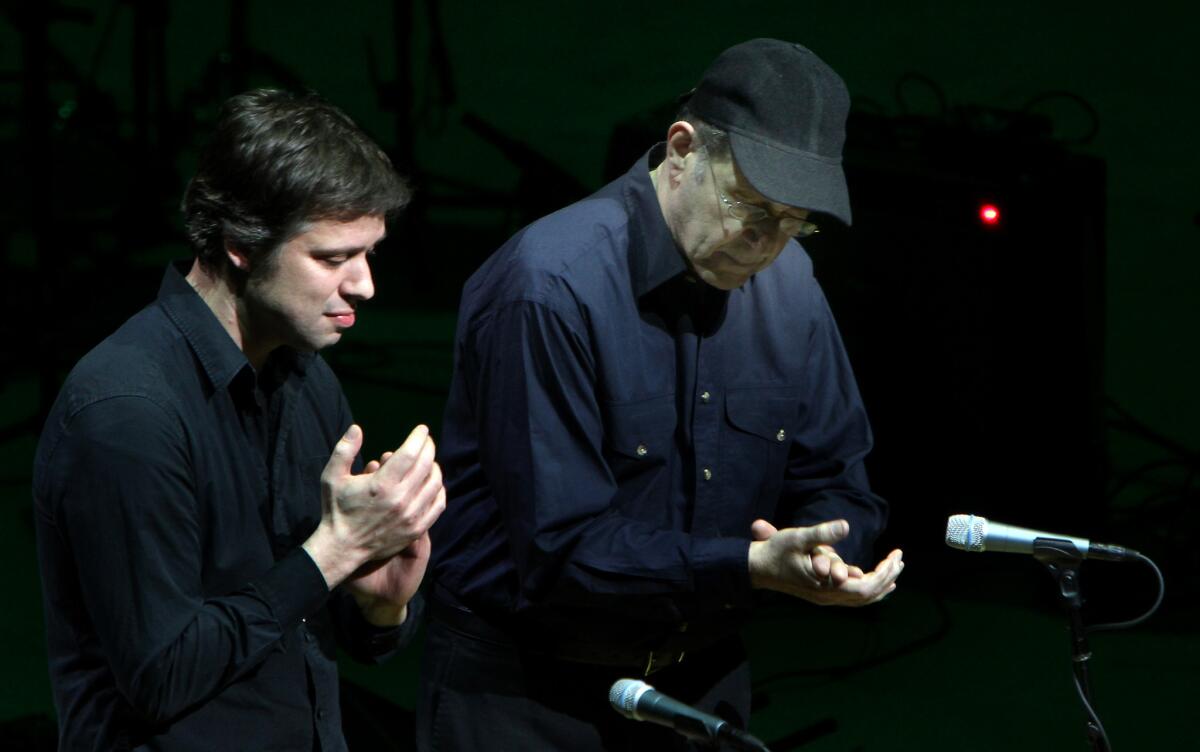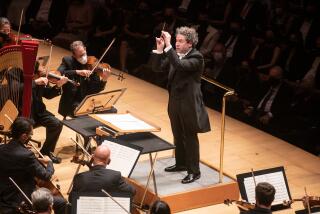L.A. Philharmonic’s Minimalist Jukebox festival reveals a wide range

In his classic tome “The Rest Is Noise: Listening to the Twentieth Century,” critic Alex Ross compares Minimalism to driving a car “across empty desert, the layered repetitions in the music mirroring the changes that the eye perceives — road signs flashing by, a mountain range shifting on the horizon, a pedal point of asphalt underneath.”
Think of the Los Angeles Philharmonic’s Minimalist Jukebox festival, then, as a Mojave roadside diner where the menu changes constantly and there’s always some unexpected disc spinning hypnotically on the turntable: John Adams’ “Naive and Sentimental Music,” Steve Reich’s “Vermont Counterpoint” or perhaps “Autobahn,” the robotic road-trip chamber work by post-human electro-pioneers Kraftwerk.
A cross-disciplinary movement that found expression in the sculptures of John McCracken and the existential musings of Samuel Beckett’s plays, Minimalism is an art of reduction to absolute form and elemental repetition. Yet despite its somewhat restrictive moniker, Minimalism can be a surprisingly expansive, elastic concept that connotes an array of experimental possibilities both in composition and, perhaps especially, in performance.
CRITICS’ PICKS: What to watch, where to go, what to eat
The Phil’s festival seeks to suggest that range. “Minimalist Jukebox” will open March 18 at Disney Hall with a series of Kraftwerk 3-D concerts and climax with the L.A. Phil and guests performing “De Materie (Matter),” a four-part vocal and orchestral work by the Dutch composer Louis Andriessen.
In between will be an April 8 Green Umbrella “Maximum Minimalism” program of pieces by Reich, Adams, David Lang and others; an April 9 performance of works by Terry Riley, Sonic Youth, Brian Eno and other composers by French sibling piano duo Katia and Marielle Labèque; several concerts by maverick organist Cameron Carpenter; and Grant Gershon conducting the Phil in Philip Glass’ operatic/choral music from the “Rome” section of Robert Wilson’s “the CIVIL warS.”
“For us, it feels incredibly varied,” says Chad Smith, the Phil’s vice president of artistic planning.
When the Phil presented its first Minimalist Jukebox in 2006, Smith says, “It was the first time an American orchestra had done such a deep dive” into “the most important classical music movement to be born in this country.”
PHOTOS: Arts and culture in pictures by The Times
The festival’s 2014 iteration will allow the Phil to grapple with what Smith calls “these pillars, these big, unwieldy pieces” like “CIVIL warS,” while also re-contextualizing rock and electronic music that’s seldom explored inside orchestral halls. If, as Smith puts it, Adams is Minimalism version 1.5 and Bang On a Can is Minimalism 2.0, this year’s festival may help point audiences toward Minimalism 2.5 and beyond.
Those offshoots include the current EDM (electronic dance music) craze, which traces its lineage back to Glass, John Cage and the slashing, spiraling chord progressions of Alfred Hitchcock’s favorite composer, Bernard Herrmann. One of the Labèque sisters’ programs opens with “Le Fils des Étoiles — Prelude: La Vocation” by the proto-Minimalist Erik Satie, who died in 1925 but might’ve felt strangely at home amid the fist-pumping masses of Electric Daisy Carnival.
“What we’re always trying to do is provide as many possible points of entry into the concerts that we do,” Smith says.
More to Read
The biggest entertainment stories
Get our big stories about Hollywood, film, television, music, arts, culture and more right in your inbox as soon as they publish.
You may occasionally receive promotional content from the Los Angeles Times.











